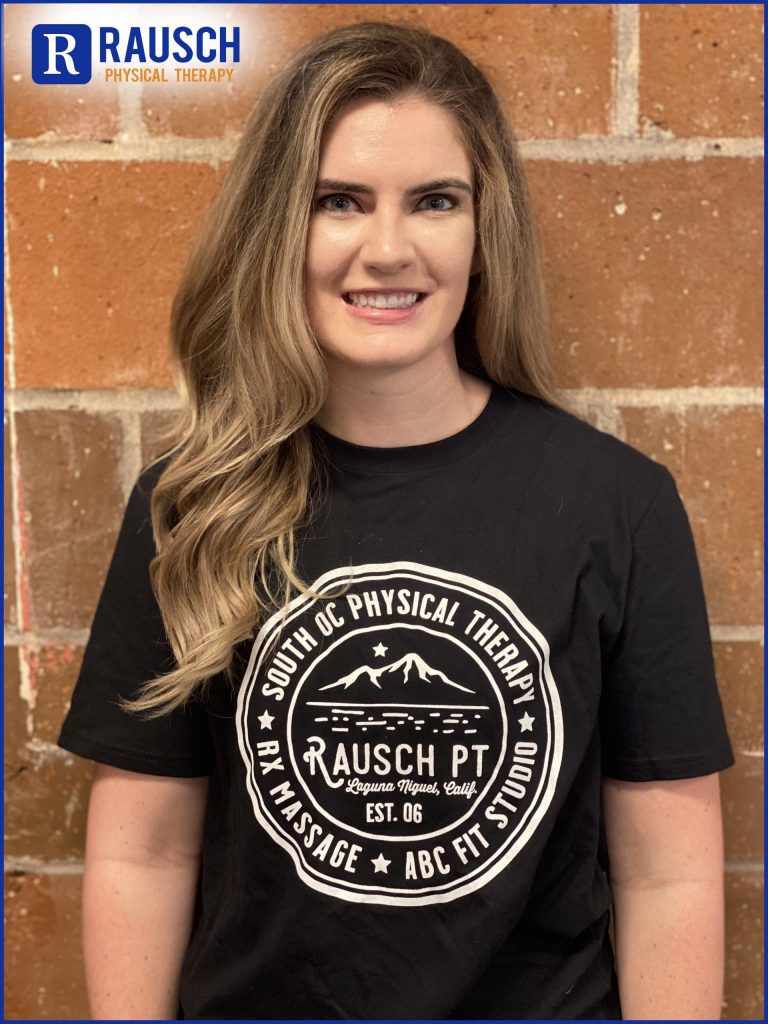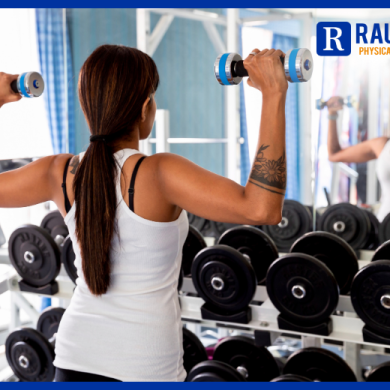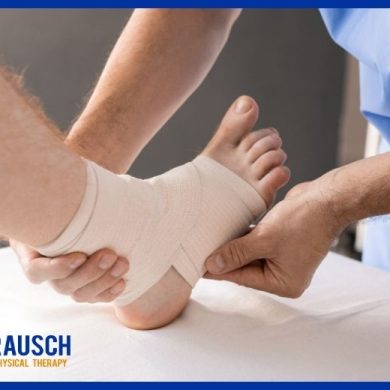At Rausch Physical Therapy and Wellness, we believe that movement is medicine—at every age and every stage of life. That’s why we’re excited to announce our new partnership with Fort Fitness,
Exercises to Help Prevent ACL Tears in Soccer Players By Dr. Renee Rinard PT, DPT, ITPT
September 28, 2020 2:44 pm / Category: Soccer
If you’re a soccer player, you’ve probably heard the term “ACL” or most likely know someone that has torn their ACL in their soccer career. Its most commonly torn in sports involving sudden directional changes, sudden stops, and jumps; basically, the activities that are constantly performed throughout soccer practice and soccer games.
So what is an (ACL)? And what does it do? “ACL” stands for Anterior Cruciate Ligament and it is a ligament that connects your femur (thigh bone) to your tibia (shin bone) and averages about only 32 mm but is a major player in the stabilization of the knee joint. When it is torn, most complain of feeling very unstable or have episodes of “buckling” while walking or going downstairs. Surgery is usually required with a minimum of 4-6 months rehab in physical therapy; 9 months is usually recommended to return to sport with the least likely risk of re-injury at that point. If return to sport occurs earlier than 9 months, the risk of re-injury goes up.
Most ACL injuries occur in NON-CONTACT incidents, which means that the tears normally occur when the player was unable to properly control the leg while landing from a jump, a quick change of direction, sudden stop, etc. With proper strengthening, stabilization, balance, and control exercises, we have a higher chance at preventing ACL tears in soccer players.
FUN FACT:
Female high school soccer players are at the highest likelihood of tearing their ACL when compared to all other high school sports.
Below are 7 exercises aimed at the needs of soccer players to help prevent non-contact ACL tears.
-
Clamshells
- Lay on your side with a resistance band around your knees. Bend your knees up so you have approx 45 deg angle at the hip and a knee. Keep your hips stacked on your side and your feet together. Lift your top knee just high enough so your hips stay stacked. Perform on both sides.
- WHERE YOU SHOULD FEEL IT: side of your top hip
- TIP: to ensure your hips are stacked correctly, position your top knee slightly in front of your bottom knee so it hangs slightly over. Can progress to clamshell in a side plank position
- Lay on your side with a resistance band around your knees. Bend your knees up so you have approx 45 deg angle at the hip and a knee. Keep your hips stacked on your side and your feet together. Lift your top knee just high enough so your hips stay stacked. Perform on both sides.
-
Lateral walks
- In standing position, place a resistance band around your knees. Start in a slight squat position with tension on the band. Keep toes facing forward and knees in line with your feet/ankles (do not have knees cave in). Take a small step to the side and continue for approx 10-15 steps. Maintain a squat position throughout the activity. For increased challenge, put the band around your arches; then around both knees and arches. Perform both directions.
- WHERE YOU SHOULD FEEL IT: sides of your hips
- TIP: keep tension on the band throughout lateral walks; do not bring feet completely together between steps. If you are having a hard time maintaining a low enough squat because you feel like you will fall backward, hold a dumbbell or kettlebell in front of you to act as a counterweight in order to hold the position.
- In standing position, place a resistance band around your knees. Start in a slight squat position with tension on the band. Keep toes facing forward and knees in line with your feet/ankles (do not have knees cave in). Take a small step to the side and continue for approx 10-15 steps. Maintain a squat position throughout the activity. For increased challenge, put the band around your arches; then around both knees and arches. Perform both directions.
-
Hamstring slide outs in the bridge position
- Lay on your back with knees bent, lift hips up off the ground into a bridge position. While maintaining the bridge position, slide feet away from the body in slow and controlled motion. During this motion, hips are still off of the ground but are lowering throughout. Slide feet out as far as you can while maintaining control and proper form. If strong enough, pull heels back towards the starting position while maintaining bridge to continue with repetitions, otherwise, lower hips down to the ground and reset at the bridge position.
- WHERE YOU SHOULD FEEL IT: hamstrings (back of thighs), glutes
- TIP: for sliding out, you can wear socks on a slick floor, paper towels/towels on a slick floor, sliders under your feet, or a swiss ball (tougher than feet on the floor). If your low back starts to hurt or strain, concentrate on squeezing your glutes more to take the pressure out of your low back. Once a double leg is mastered, can progress to one leg.
- Lay on your back with knees bent, lift hips up off the ground into a bridge position. While maintaining the bridge position, slide feet away from the body in slow and controlled motion. During this motion, hips are still off of the ground but are lowering throughout. Slide feet out as far as you can while maintaining control and proper form. If strong enough, pull heels back towards the starting position while maintaining bridge to continue with repetitions, otherwise, lower hips down to the ground and reset at the bridge position.
-
Copenhagen adductor
- Using a chair or bench, you will be in a side plank position on the elbow with your top leg positioned on the chair/bench. Make sure your knee is supported by the chair/bench and not hanging off of it. When in the starting position, lift the bottom leg up and down toward the chair/bench.
- WHERE YOU SHOULD FEEL IT: inside of the bottom leg, outside of the bottom hip, supporting shoulder
- TIP: make sure the bottom hip does not sink toward the ground; maintain a straight line from torso to legs in order to get strengthening benefits of glute medius (side of the hip). Make it fun by having a teammate hold your top leg!
- Using a chair or bench, you will be in a side plank position on the elbow with your top leg positioned on the chair/bench. Make sure your knee is supported by the chair/bench and not hanging off of it. When in the starting position, lift the bottom leg up and down toward the chair/bench.
-
Walking lunges
- Starting in standing position, bring one leg in front of you by taking a large step. Lower down by bending the knees and keeping the torso upright. Push up with your front heel to elevate and bring back leg to meet your front leg. Perform with the other leg. Make sure your toes are facing forward, the knee is over your foot, and hips are in line with the knee. FRONT KNEE SHOULD NOT BE CAVING INWARD NOR SHOULD YOUR HIP FALL OUT TO THE SIDE throughout the movement)
- WHERE YOU SHOULD FEEL IT: side of hip, quadriceps, glutes
- TIP: if walking lunges are too difficult or you are unable to keep proper form (knees are caving in) throughout the movement, can start with static lunges: Start in the lunge position and perform up/down movement continuously on one leg in the same position, then switch to the other side. Walking lunges are a more dynamic activity and tougher to perform while maintaining proper hip/knee alignment. Walking lunges should be a goal, but if they cannot be performed properly, static lunges are a good starting point. You do not need to touch the ground with your back knee.
- Starting in standing position, bring one leg in front of you by taking a large step. Lower down by bending the knees and keeping the torso upright. Push up with your front heel to elevate and bring back leg to meet your front leg. Perform with the other leg. Make sure your toes are facing forward, the knee is over your foot, and hips are in line with the knee. FRONT KNEE SHOULD NOT BE CAVING INWARD NOR SHOULD YOUR HIP FALL OUT TO THE SIDE throughout the movement)
-
Pistol Squat to Chair
- Standing on one leg, lower down as if going to sit down in the chair. Slow and controlled. Ensure that the knee does not cave in during the movement (just as with the lunges). Place both feet on the ground to come to a standing position. Repeat.
- WHERE YOU SHOULD FEEL IT: glutes, quadriceps, hamstrings
- TIP: to progress this exercise, when you reach the chair at the bottom of the movement, use that one leg to return to standing position rather than both legs. Make sure to push up through the heel. Continue to make sure the knee does not cave in and the hip does not fall out to the side. To progress past this, remove the chair and perform continuously.
- Standing on one leg, lower down as if going to sit down in the chair. Slow and controlled. Ensure that the knee does not cave in during the movement (just as with the lunges). Place both feet on the ground to come to a standing position. Repeat.
-
Dorsiflexion Ankle Mobs
- **This is not a strengthening exercise, but a mobility activity to ensure proper ankle mobility. This will help to decrease improper positioning and compensation of the knee
- Kneel down on the floor with your front foot approximately 6 inches from a wall. Lean forward, pushing knee towards the wall over toes. When you reach your max distance, hold in this position for at least 5-10 seconds. Repeat.
- WHERE YOU SHOULD FEEL IT: you may feel a stretch in your calf/Achilles when performing or some pressure in the front of your ankle.
- TIP: if you have a sturdy band, can place along the front of the ankle joint to assist in mobilization.
Dr. Renee Rinard PT, DPT, ITPT
Let’s talk! We are here to help. Give us a call for a complimentary consultation. We would love to meet you.
Did you know there’s no prescription needed from a doctor to see us – but we will communicate your progress and treatment to your doctor if you’d like us too!
(949) 276-5401







